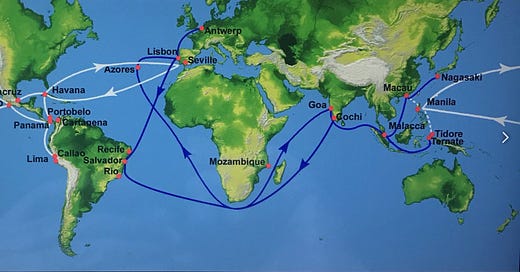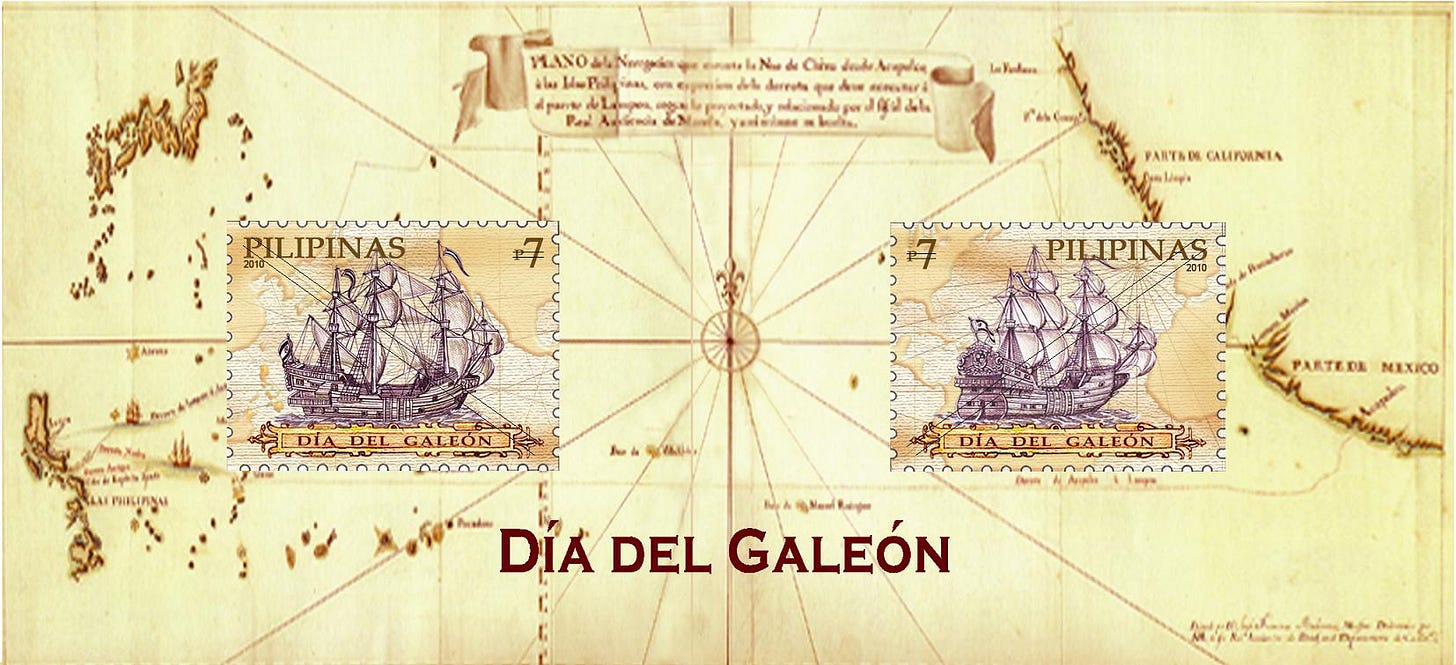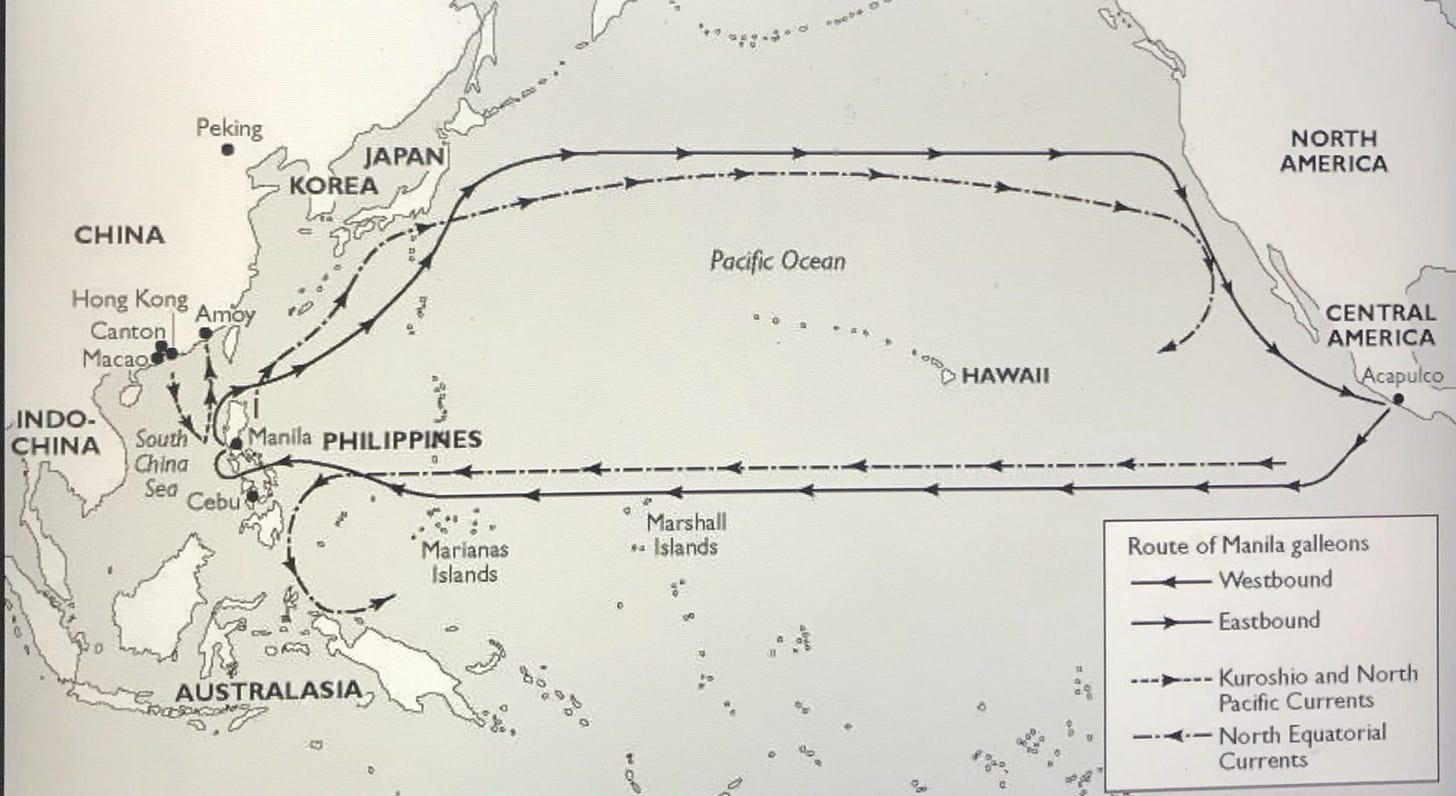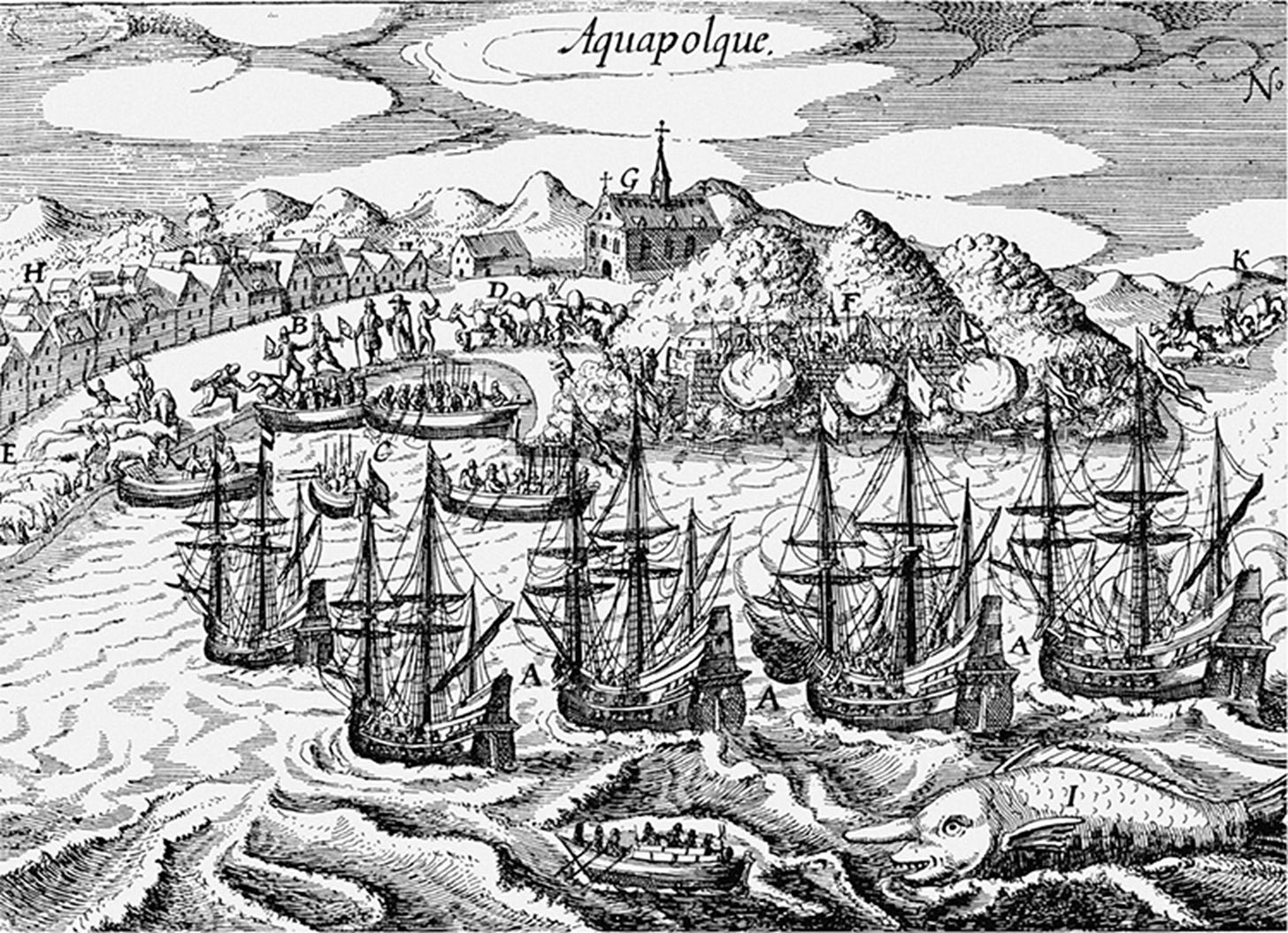Diego Gualpa, Andres de Urdaneta and Zhang Juzheng: These are the people lost in the footnotes of history. Even ardent and diehard historians would probably struggle to recollect them and their contributions to a seminal episode in global history. Contribute they did, in their own small but impactful way. Separated by thousands of miles in three different parts of the world, they set in motion events whose influence intersected, converged and combined to give rise to a world, which most historians accept today was first stirrings of true globalization, the origins of our modern world.
Diego Gualpa, a native Indian from the Andes in modern day Bolivia, accidentally discovered the largest pure silver mine in the world.
Andres Urdaneta, a Spanish friar from the Basque region, discovered how to sail back from east to west.
Zhang Juzheng was a Chinese high official during the late Ming dynasty, who was responsible for making Silver the official metal for tax collection.
The confluence of these resulted in a global age of commerce spanning continents, from Americas to Asia and Europe, underpinned by the Spanish Silver Real, the first true global currency of the world, ushering in an era of “silver standard”. The Worldwide demand for silver increased dramatically by the beginning of 17th century, when China due to its policy of moving to silver currency entered a "silver century". Fortuitously for Spain, the stars aligned and the discovery of huge amounts of silver in its American colonies of modern-day Bolivia and Mexico coincided with a worldwide surge in demand for silver. Trade networks developed rapidly over the next century, led by the Portuguese and followed by the Dutch and English traders and the demand for silver as currency of trade increased exponentially. This simultaneous increase in demand and supply of silver led to the Spanish real emerging as an international currency. The real, which started as a currency of circulation in Europe eventually became the standard medium of exchange and commerce through the America’s, China and South-East Asia. Eventually it was the demand for silver from China that drove this era of rapid commerce and Spain was just content to ensure the supply of silver without interruption.
About a decade after the Spanish conquered the Inca empire in 1532, following the story of local goat herder, in 1545, Diego Gualpa and indigenous prospector from Andes stumbled upon what would turn out to be one of the richest silver deposits in the world on a high mountain of 4,800 meters in the eastern Bolivian Andes. This was Potosi, which would define world trade and economy for the next three centuries. Here in the shadow of what the Spaniards called the “Cerro Rico”, the rich mountain, a mining boom town quickly developed and by the end of the sixteenth century, it had become one of the largest cities in the world. Beginning in the 1550’s Potosi was at the center of the explosive growth of global intercontinental exchange and creating the first true global currency of exchange, the Spanish Real or popularly known as “pieces of eight” each with the mark “P” for the Potosi Mine. During the sixteenth century the population of Potosi grew to over 200,000 and its silver mine became the source of 60% of the world’s silver. Between 1545 and 1810 Potosi’s silver contributed nearly 20% of all known silver produced in the world across 265 years. It was at the core of the Spanish Empire’s great wealth and was called the “the treasury of the world”.
At the time of Potosi’s discovery in 1545 both Europe and Asia were undergoing a bullion famine. Population growth and commercial expansion in the centuries after the Black Death of the 1340s drove up demand for precious metals, gold and especially silver, which were the only accepted medium of exchange for international transactions. Soldiers and mercenaries demanded payment in gold or silver. Globally, gold was scarce, and silver was less scarce, but because of its relative abundance compared with gold, silver was used for most international or imperial transactions. But as the economies and trade grew and there was rise in conflicts in Eurasia, the rising demand for silver could not be met. The silver from Potosi ended the bullion famine which had engulfed Eurasia and provided the much-needed lubrication for trade networks. Initially the silver flows reached across the Atlantic Ocean from South America to Spain and Europe, and to the east from Seville in Spain and Lisbon in Portugal to the Ottoman and Safavid Empires and to Mughal India and to China under the Ming and Qing dynasties. After 1565 silver from the Americas also crossed the Pacific Ocean to the Spanish city of Manila and on from Manila by Chinese junks to Fujian in China where the port of Quanzhou was one of the world’s busiest shipbuilding and commercial centres.
The production of silver at Potosi was further aided by technological advancement and exploded in the early 1570s after the discovery of a mercury amalgamation process to extract it from the mined ore, coupled with the imposition of a forced labour system known as the mita. Native Peruvians from hundreds of miles away were forced to travel to Potosí to labour in the mines, then given the back-breaking task of carrying the daily quota of 25 bags of silver ore, each weighing around 45kg, to the surface.
Potosí was the first city of capitalism, for it supplied the primary ingredient of capitalism – money. Potosí made the money that irrevocably changed the economic complexion of the world.
Andrés de Urdaneta is a name that few other than specialist historians will immediately recognise. He was one of the last of the fifteenth and sixteenth-century explorers and navigators from the Iberian Peninsula whose voyages resulted in redrawing the globe in more or less the form we know it today. Christopher Columbus has a country named after him and Ferdinand Magellan has the famous straits. But Urdaneta has no such monuments, perhaps this is because Urdaneta didn’t discover how to get anywhere, but rather less glamorously but no less importantly discovered how to get back. After Magellan crossed the pacific and discovered the east-west route to Asia, for decades, the Spanish knew how to travel to Asia from the Spanish colonies in America, but they didn't know the way from Asia to New Spain. Until 1565, no fleet had succeeded in sailing east from Asia back across the Pacific to the Americas. It was Urdaneta, a survivor of earlier expeditions, who first worked out the right winds and currents across the uncharted waters of this vast ocean. His discovery was called the tornaviaje, or ‘return trip’.
This was the result of a a meteorological phenomenon that a few sailors were aware of, and no one really understood. Variations in atmospheric pressure over the Indian Ocean are mirrored by opposite changes over the south-eastern Pacific, so that if one is falling the other is invariably rising. These variants are responsible for determining the nature and strength of the trade winds. Under normal conditions, these winds blow from east to west, pushing surface water with them away from the Americas. It was this pathway that Ferdinand Magellan discovered during his voyage of 1521 and along which others followed. The global wind pattern or general circulation splits the surface winds of each hemisphere into three belts: the easterly-blowing polar winds, the prevailing westerlies between 30–60 degrees of latitude, and the tropical easterlies between 0–30 degrees. As a result of the earth’s rotational motion, winds do not blow directly northward or southward but are deflected at right angles away from the straight path of high to low pressure. They are always deflected to the west in the Northern Hemisphere and to the east in the Southern.
Early Spanish explorers were driven by their need to find a practical passage back to the Americas, the elusive turnback. This was critical in light of the Treaties of Tordesillas in 1494 and Zaragoza in 1529 that divided the world between Portugal and Spain. The turnback was important to ensure that Spanish mariners returning from Asia would do so by back-tracking across the Pacific, and not by way of the Cape of Good Hope through Portuguese dominions. Four unsuccessful attempts were made, and all these efforts ended in failure, but eventually much useful information was learnt and the importance of sailing north to encounter the westerly winds around the 30th parallel realised. In 1565, a ship commanded by Felipe de Salcedo and the veteran pilot Andrés de Urdaneta was dispatched from the Philippines to find the way back. Their ship rode the monsoon north and continued to climb in a general north-easterly direction before encountering the prevailing westerlies that carried them across the ocean to the American coast. There the California Current helped them south till they dropped anchor in Acapulco on 8 September after being at sea 129 days. This passage came to be known as Urdaneta’s route and set in motion for 250 years, the journeys of famed Manila Galleons.
The contours of the Spanish empire were established with the discovery of the eastward passage across the Pacific. The Manila galleons were operational within a decade of the first turnback and today would be equivalent of a shipping line. There were regularly scheduled sailings between Manila and Acapulco with specially built cargo ships, which grew to become among the largest ever constructed, reaching some 2000 tons. They were the super-container ships of their day and by 1587, single cargoes could be worth as much as 2 million pesos.The galleon trade that began was to endure until the last ship, the Magallanes left from Acapulco in 1815. It served as the feeder line servicing Manila as the entrepôt of the Pacific where the silver of New Spain was exchanged for the luxuries of the Orient, among other, Chinese silks and porcelains apart from spices and other luxury goods from India and other parts of Asia.
The trading route that resulted from Urdaneta’s discovery and the rise of the Manila galleons, brought the silver from the Americas that underpinned China’s money supply and transformed the global economy. This Ruta de la Plata or the ‘Silver Way’ characterised a period when commerce between China and Spanish America formed the lynchpin of trade routes spanning four continents. It also marked the first time the entire world had been knitted together with the global trade and financial networks that form the basis of our modern globalised world and ushered in the global economy that remains with us today.
Zhang Juzheng was a prominent government official and reformer who served as the grand secretary and chief advisor to the Wanli Emperor during the late Ming Dynasty. While the Spanish produced enough Silver, it was China’s demand for silver that changed the complexion of global trade. What started it was “The Single Whip Reform”, which was a shift in Ming Dynasty China's tax structure, from payments in kind (e.g. rice, grain, textiles) to tax payments in silver, implemented throughout the empire around 1580 and was the brainchild of Zhang Juzheng. Thirty or forty different categories of taxes were now simplified into a singular and streamlined tax structure, and were now to be paid in silver currency. It would be an understatement to say that this reform was not only significant for the Chinese, but had a profound impact on world history, as the newly increased demand for silver within China drove Asian and European trade networks by linking sources of silver in New Spain with sources of Chinese goods.
In China’s history, silver underwent a complicated evolution from a valuable commodity to a major currency, as silver tael evolved from an illegal currency to the de facto legal currency during the Ming Dynasty. The Chinese were the first in the world to introduce paper currency. Starting with the official issuance of jiaozi in 1023 until the official monetization of silver in the middle of the Ming Dynasty, paper money had been used for more than five centuries. The Ming inherited paper currency from the Mongol Yuan dynasty and policy was modelled based on it. People were prohibited from using gold and silver in trade, which was made a crime, or from exchanging paper currency for gold and silver.
Due to the lack of an effective system to limit the issuance of banknotes, the Ming authorities would flood the market with paper money from time to time, triggering ruinous inflation. For years the paper currency law was unenforceable, the reason being that the imperial court had no way of reclaiming the excess currency in circulation and as a result, goods were valued more highly than currency. When paper currency became devalued, the Ming government tried to wield its administrative power to force everyone to use it but could not sustain the pressure for long since the bureaucracy that was responsible for enforcing it was the first to resist the action. With the welfare of officials also affected by devaluation, continued expansion of the paper currency system naturally became difficult. An important side effect was on taxation, which moved to being paid in kind by the people and made it extremely difficult for the government from a revenue management perspective. The emperor finally realized that something needed to be done about this. Taxation is always a principal artery of historical change, and money its network. The Ming dynasty silver ban ended mainly because silver proved itself. The empire needed taxes to sustain itself, and reforms like the Single Whip tax system led to more efficient taxation land, agriculture and commerce.
The new tax system in effect standardized the Chinese money supply, serving more than a quarter of the world’s population on silver. China, however had limited available silver of its own, and while considerable amounts came via Portuguese trade intermediaries and the silver mines in Japan, they were not sufficient. The solution lay on the other side of the Pacific in the Spanish colonies of America, which seemed to have supplies of Silver that seemed unlimited.
Rise of the global economy
The Acapulco–Manila line itself formed part of a much longer route of some 24,000 kilometres that connected Seville in Spain with Manila in Philippines under a single governing jurisdiction, the Spanish empire. Asian silk, porcelain, ivory and spices would be sent across the Pacific from Manila to Acapulco. In these pre-Panama Canal days, goods had to cross the isthmus overland. The route from Acapulco to Mexico City was known as the ‘Camino de China’. From Mexico City, goods continued to the Caribbean port of Veracruz, where they were loaded on the Flota de Indias, the West Indies Fleet and then sailed to Seville. Havana served as a transshipment hub. Goods such as wine, oil and manufactured products would go in the other direction.
Unlike earlier centuries, trade was truly global, and this now had a direct impact on the consumption of ordinary people across continents. Textiles made up the bulk of goods imported into Mexico. These were not just silk and fabric, but also included finished items such as clothing, bed linens and rugs. These were the mass-market consumer goods of the age, which city-dwellers came to expect and rural populations desired. Everyone, indigenous peoples to sophisticated city-dwellers, went about in garments made from Asian silks and cottons. Asian consumer goods that were once luxuries became necessities. Manila was founded in 1571 and by the end of the 17th century, a century of operation of the Manila galleon, Manila merchants offered a wide range of cottons from India’s Coromandel Coast, including calicoes, chitas, cambays and ginghams. Manila wasn’t just an entrepôt for China anymore, which it began its life as, but was now a truly global city.
Beyond just goods and money, commercial integration extended to people as well. In 1635, Spanish barbers in Mexico City complained to the municipal council of unfair competition from Chinese barbers. The council sided with the complainants and recommended that the Chinese barbershops be limited to twelve and be relegated to the suburbs. Asian immigrants were also active in various other professions. As one early seventeenth-century visitor to Mexico city, prelate Thomas Gage noted - The goldsmith’s shops and works are to be admired, the Indians and the people of China that have been made Christians and every year come thither, have perfected the Spaniards in that trade.
End of an Era
Wars in 18th century Europe, the Seven Years and the Napoleonic wars had major global implications. They weakened Spain considerably and particularly affected Spanish America, and it was the independent movements in the countries of Latin America that sounded a death-knell to the silver age. They altered the existing trade arrangements with the independent colonies pursuing different paths. Implosion of the Spanish Empire after 1808 led to fragmentation of a previously unified monetary regime, resulting in production of coins of divergent quality, fineness, and weight. This destroyed the virtues of the Spanish Real and resulted in the cessation of the silver peso standard.
The last Manila galleon to sail from Acapulco was the San Fernando or Magallanes, which arrived at Manila empty in 1815. The San Fernando's cargo had been requisitioned in Mexico, a few years before Mexico gained independence from Spain in 1821. The Manila–Acapulco galleon trade ended due to the Mexican War of Independence, which ended Spanish control of Mexico.
Sadly, this important era is mostly forgotten in the English-speaking world, where the narratives of globalization led by gold standard and followed by the dollar hegemony dominate. This was an era where true globalization took root and was not influenced by the Anglo-Saxon world. This was a result of disparate parts of the world coming together to fulfil the true nature of demand and supply and creating networks of trade that spanned the entire globe. It pays to revisit and learn from this episode in history, in a world that is gradually moving away from the current form of globalization kick-started by Britain and then dominated by the USA.









